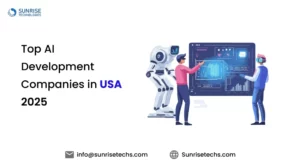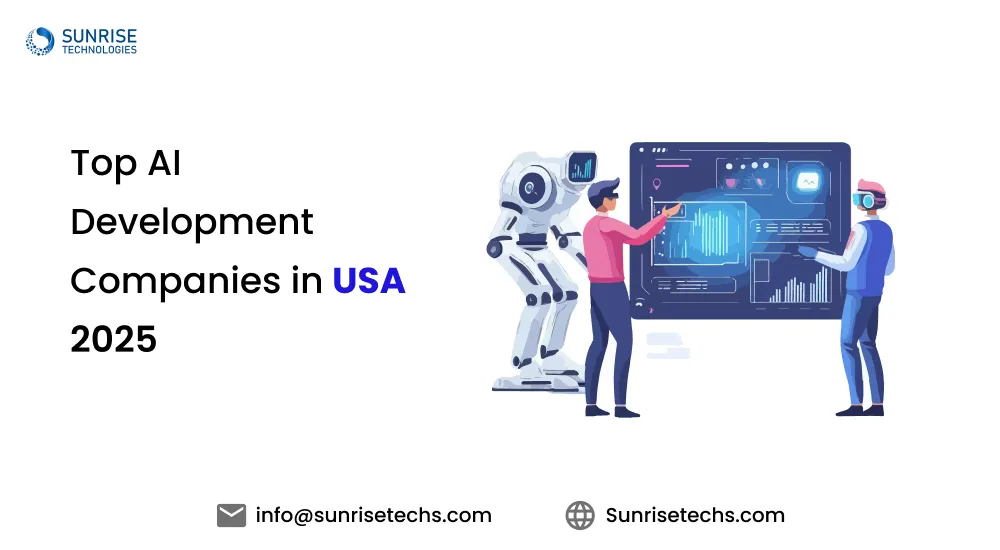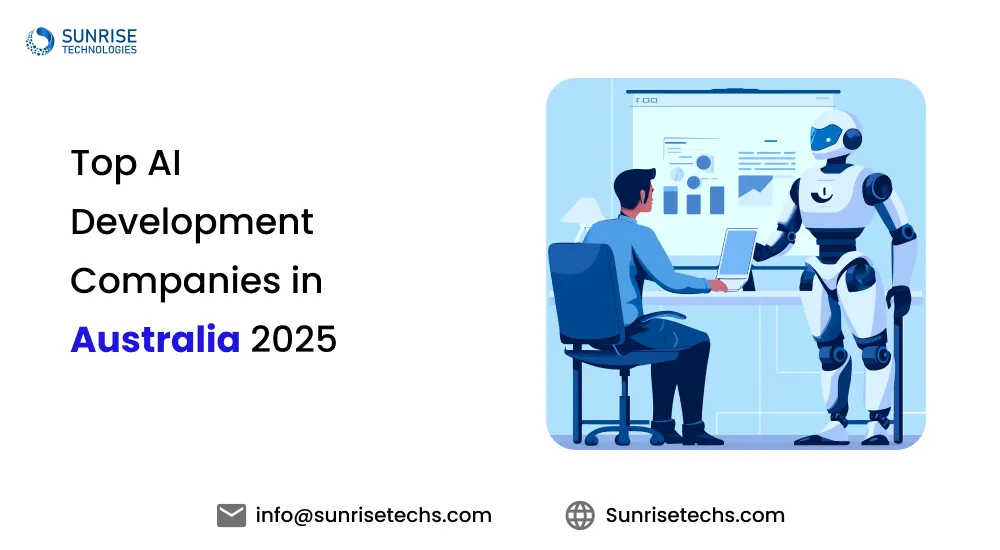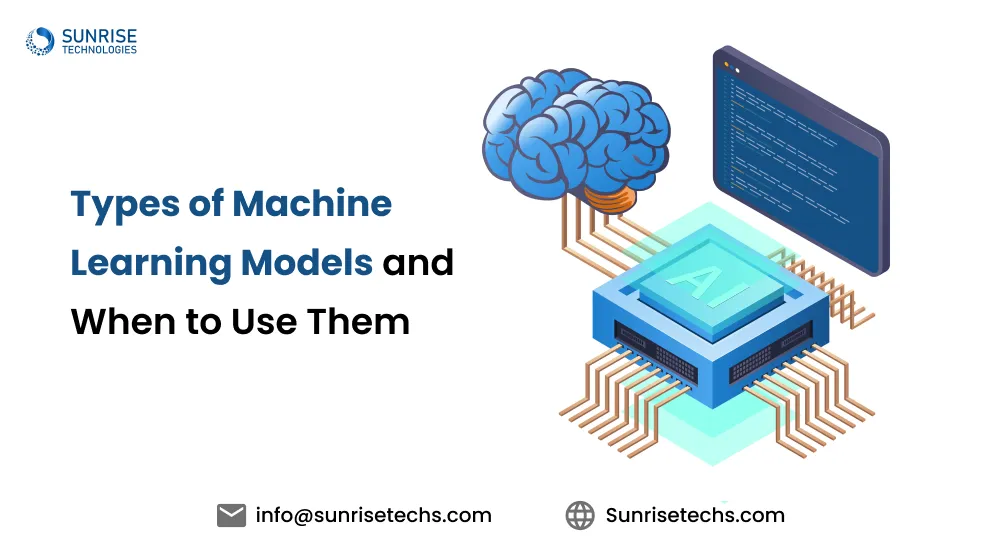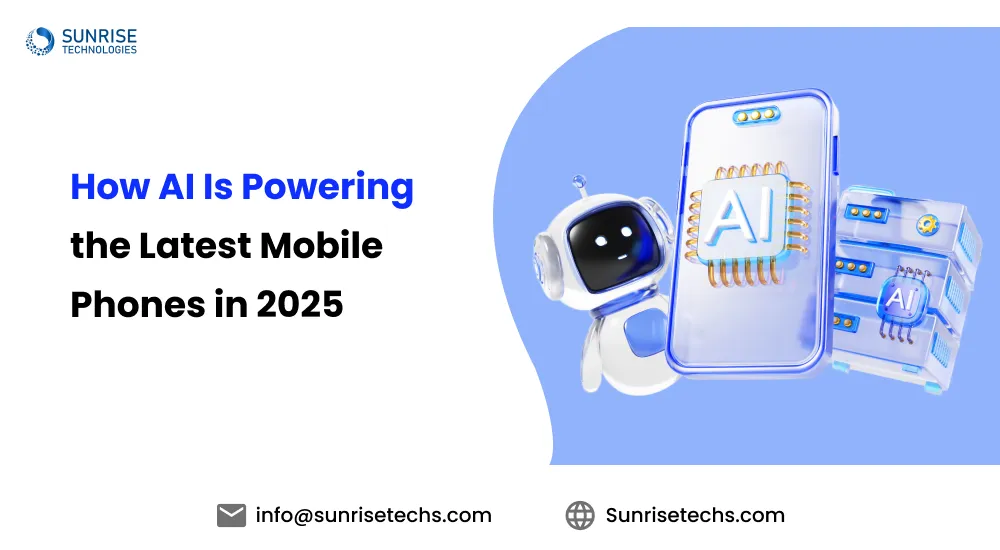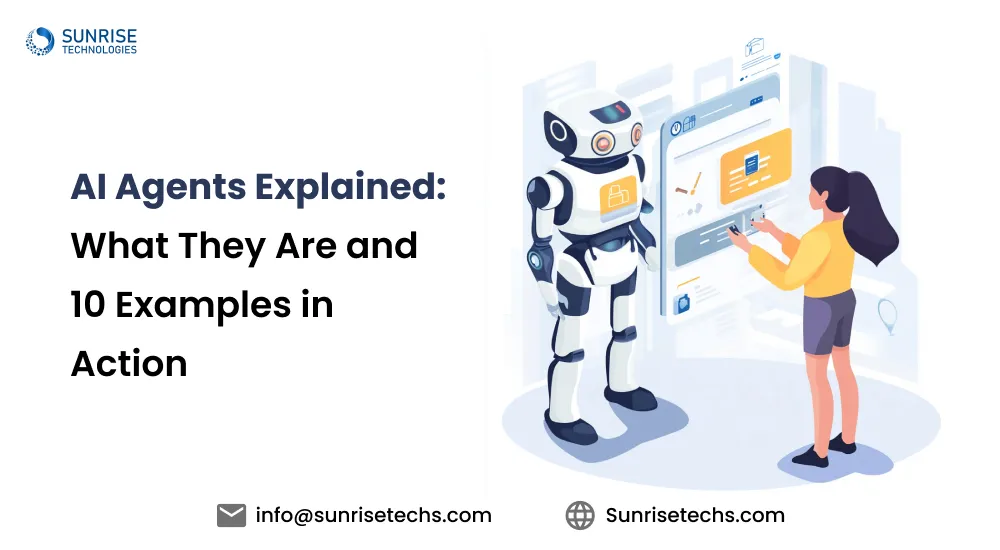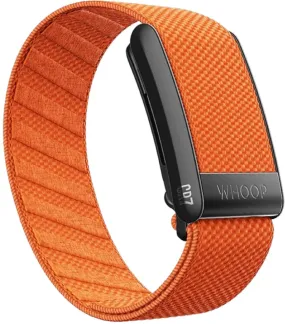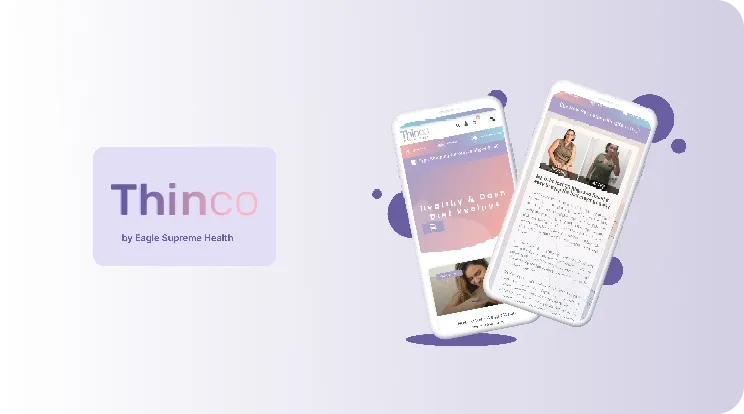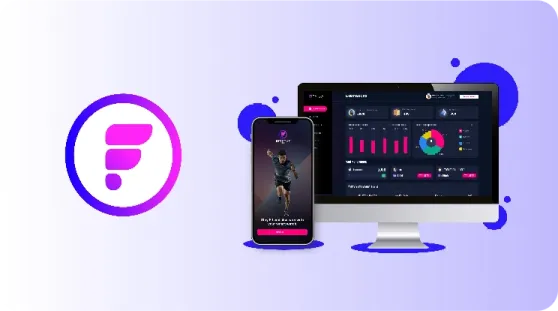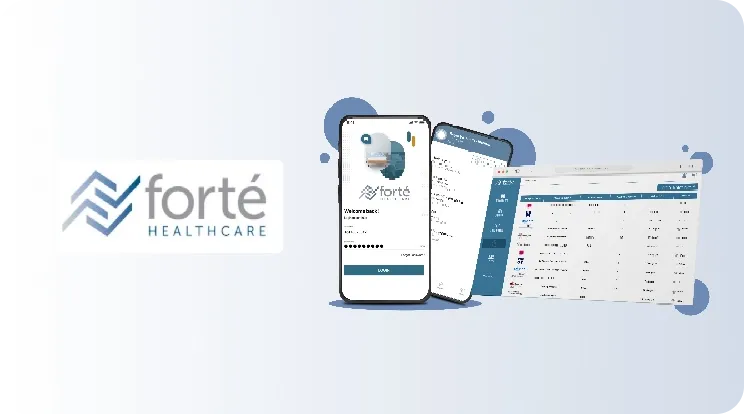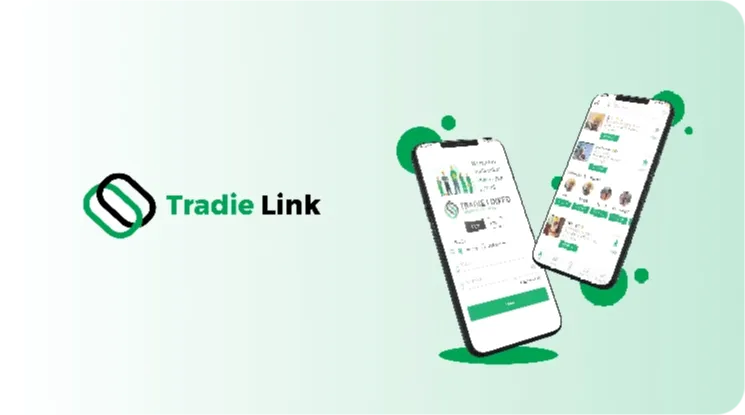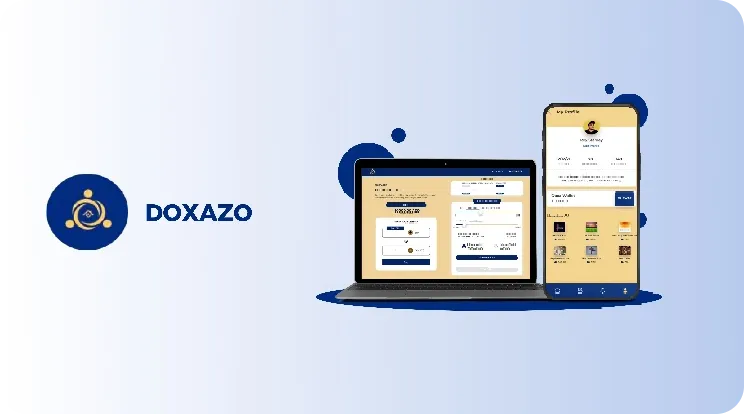Role of AI in wearable devices to enhance functionality
May 21, 2025
Remember when wearable tech started with those chunky pedometers and basic digital watches? Fast forward to today, and we’re living in a world where AI-powered smartwatches and fitness trackers do far more than just count steps, they track your heart rate, analyze your sleep, alert you about potential health risks, and even offer personalized fitness coaching in real time. It all began in the early 2000s, with the first-generation wearable devices focused on simple motion tracking.
Over the years, people were wondering, “How do AI-powered wearables work?”. And thanks to advances in AI, sensors, and connectivity, wearables have expanded across industries, from healthcare and fitness to manufacturing, logistics, and even mental health monitoring.
Curious about how does AI enhance wearable devices, what it costs, and where the future is headed? Let’s dive deep.
Market Overview: The Growing Wearable AI Market
The global wearable AI market is seeing impressive growth, valued at USD 62.7 billion in 2024 and projected to reach USD 138.5 billion by 2029, reflecting a robust compound annual growth rate (CAGR) of 17.2%. The integration of artificial intelligence (AI) into wearable devices is paving the way for advanced capabilities, enhancing the way we monitor health, track fitness, and interact with our environments.
Meta’s Ray-Ban smart glasses and the AI pin with OpenAI’s ChatGPT are redefining wearable tech. The Ray-Ban glasses offer AI-powered AR experiences and voice commands, letting users interact with the world hands-free. Meanwhile, the AI pin brings ChatGPT’s capabilities right to your sleeve, providing real-time assistance with tasks like scheduling, info retrieval, and smart home controls. These innovations are pushing the boundaries of how AI integrates into our daily lives.
- Healthcare & Fitness: AI-powered wearables are transforming health monitoring, offering real-time heart rate tracking, sleep pattern analysis, and early detection of health issues, providing deeper insights into personal well-being.
- Consumer Demand: The rise in demand for AI-driven smartwatches and fitness trackers reflects a shift toward smarter, personalized devices, offering features like predictive health analytics, real-time health alerts, and tailored lifestyle recommendations.
- Technological Advancements: Continuous progress in machine learning and sensor technology is enhancing AI wearables, enabling them to provide more precise data, smarter insights, and adaptive, real-time solutions to meet individual user needs..
What is a Wearable Device?
A wearable device is a portable technology designed to be worn on the body. These devices collect data, provide real-time insights, and offer functionalities that help users track their health, fitness, or other vital metrics. With the AI technology integration, wearable devices are evolving beyond basic fitness tracking to offer smart, real-time analytics, personalized recommendations, and even health diagnostics.

Image title: Next-Gen Wearables: Market Pulse by Device
- Smart watches: Devices like the Apple Watch and Samsung Galaxy Watch are prime examples of smartwatch custom wearables AI applications for healthcare monitoring. These smartwatches are designed to monitor health metrics such as heart rate, blood oxygen levels, and even electrocardiograms (ECGs). Machine learning algorithms within these devices can process this data to provide health insights and send notifications.
- Fitness Trackers:Wearables like Fitbit and Garmin go beyond simple step counting by incorporating advanced AI-driven motion sensors. By fitness tracker AI integration for real-time workout analytics, they monitor physical activity, track sleep patterns, and offer insights into calories burned.
- Smart Glasses:Meta's Ray-Ban smart glasses offer a fusion of augmented reality (AR) and AI-powered functionality. These glasses use AI to provide real-time visual assistance, such as live translation, object recognition, and navigation help using natural language processing (NLP) and image recognition algorithms.
- Wearable Health Monitors:Devices like Biobeat and Dexcom's continuous glucose monitors offer real-time tracking of vital signs such as blood pressure, glucose levels, and heart rate. AI in wearable technology for remote patient care enables early detection of health anomalies, such as cardiac arrhythmias or diabetic crises, and sending alerts for immediate action.
- Smart Clothing:Smart textiles like Hexoskin and Nadi X integrate AI-driven sensors into fabric to monitor physiological data, such as breathing rate, posture, and muscle engagement, in real time. These garments provide performance analytics, injury prevention insights, and personalized feedback for fitness and wellness enhancement.
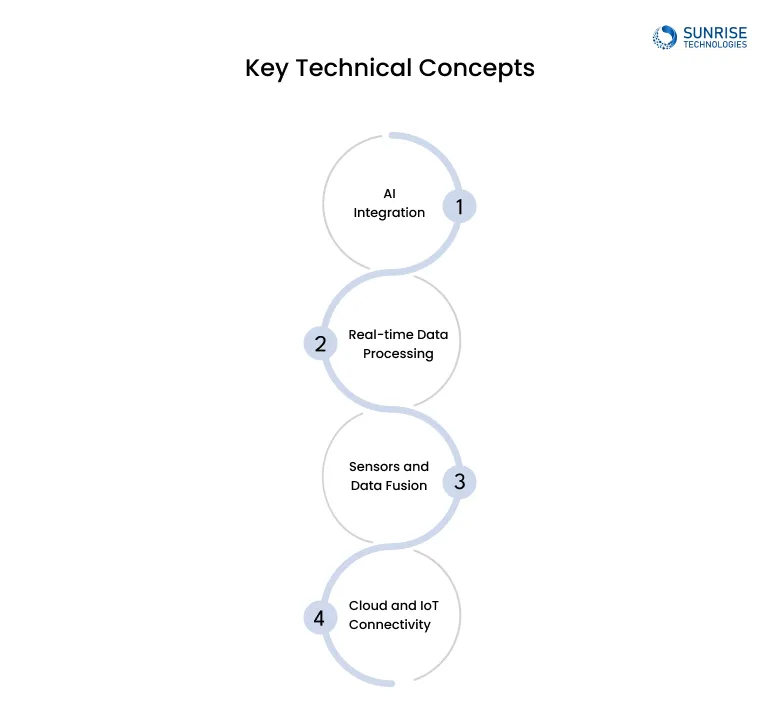
- AI Integration: Machine learning algorithms analyze large volumes of real-time data to provide intelligent insights and forecasts with AI Integration. These algorithms enable wearables to understand the wearer’s habits, predict future behaviors, and offer personalized recommendations based on health data.
- Real-time Data Processing:With advancements in edge computing, wearable devices now process data locally, offering faster response times and reducing latency. This allows for real-time health alerts, enhancing user experience and ensuring timely intervention.
- Sensors and Data Fusion: Wearable devices use advanced sensors like accelerometers, gyroscopes, and photoplethysmograms to capture a variety of biometric data. This data is then processed using AI to generate meaningful insights, such as tracking sleep cycles or detecting abnormal heart rhythms.
- Cloud and IoT Connectivity:Many wearables are connected to cloud-based platforms for additional processing and storage. This enables IoT integration, allowing devices to sync data across various devices and systems, providing a more comprehensive view of user health over time.
Applications of Wearable AI Across Industries
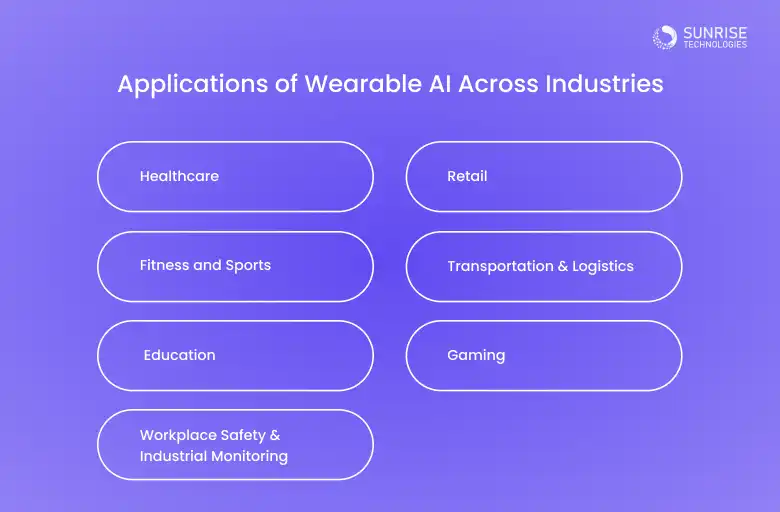
AI in wearable healthcare devices is revolutionizing the way we monitor, diagnose, and manage health conditions. Wearable AI health apps such as smartwatches and wearable ECG monitors come equipped with biosensors and machine learning algorithms that allow continuous tracking of vital signs like heart rate variability, blood oxygen saturation (SpO2), and body temperature.
These AI-powered wearable devices detect early signs of conditions such as cardiac arrhythmias or sleep apnea by analyzing deviations from baseline health data.
In the realm of fitness, AI-integrated fitness trackers for Sports are changing the game using accelerometers, gyroscopes, and deep learning algorithms. Athletes now rely on AI-powered wearable fitness trackers to fine-tune training intensity, detect muscle fatigue, and prevent injuries. These wearables analyze biometric data such as oxygen intake, stress levels, and recovery time, turning raw numbers into actionable performance insights.
Wearable AI technology in Education is opening new doors to adaptive learning. Smart devices, when paired with AI-based learning analytics, can track students’ focus levels, monitor physical activity, and analyze engagement patterns.
For example, wearable EEG headbands can detect concentration levels and send feedback to educators or digital platforms to adjust the difficulty level of coursework in real time.
In high-risk environments like construction, mining, and manufacturing, AI safety wearables for industrial monitoring are becoming essential. Equipped with IMUs (Inertial Measurement Units), GPS, and environmental sensors, these wearables detect falls, monitor fatigue, and even sense hazardous gases. Using real-time data analytics and AI algorithms, these devices can predict potential risks and send alerts to supervisors, ensuring proactive safety measures are taken before accidents happen.
AI-enabled wearables for retail like smart badges or AR glasses for enhanced customer service and inventory management. Store staff can receive real-time product information, stock updates, and customer preferences through computer vision and natural language processing (NLP) integration.
Drivers and fleet managers are adopting AI-integrated wearables for transportation to monitor fatigue, track biometrics, and enhance logistics coordination. Wearable cameras with AI-based facial recognition can assess drowsiness, while machine learning models predict route efficiency based on stress levels or body vitals.
AI in wearable devices for gaming is redefining how players interact with digital environments. From haptic feedback suits to AI-driven smart gloves and AR/VR headsets, wearables are delivering ultra-realistic and immersive experiences.Using real-time emotion recognition, motion tracking, and biometric sensors, these devices adapt gameplay based on a player’s stress level, excitement, or fatigue.
Example: Wearables like the Teslasuit or Valve Index integrated with AI emotion models and machine learning-driven motion capture systems, enhance realism in VR gaming scenarios.
Benefits of AI in Wearables: Intelligence That Moves With You
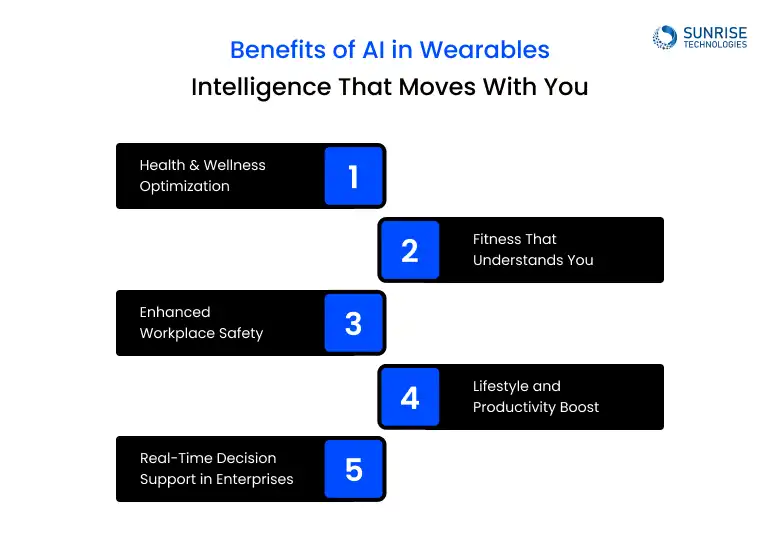
AI processes biometric data in real-time using sensor fusion and time-series analysis, allowing wearables to detect early signs of stress, fatigue, or irregular heart rhythms, empowering proactive wellness decisions.
Machine learning models track your baseline vitals, recovery trends, and movement patterns, tailoring workouts with personalized intensity zones and adaptive goal setting.
In industrial settings, AI-driven wearables detect falls, toxic exposure, or abnormal motion patterns using accelerometer data + anomaly detection algorithms, alerting supervisors in real-time.
AI in smartwatches and smart glasses enables contextual notifications, smart scheduling, voice-based assistance, and AR overlays, blending productivity with a seamless user experience.
Developing AI-integrated wearable apps and their dashboards, with predictive analytics helps field workers, warehouse staff, and remote teams stay aligned with operations and receive task-critical updates hands-free.
Let’s build a smarter future together for enhanced well-being through intelligent wearables.
Challenges and Solutions in AI-Powered Wearable Technology
Even with the rapid rise of AI in wearable devices, developers and businesses face significant challenges related to performance, privacy, and user engagement. Here’s a breakdown of the key issues, and how technology is stepping up.
With AI wearables continuously collecting sensitive personal data, like heart rate variability, sleep patterns, and real-time location, data privacy becomes a major concern. AI algorithms often process this data both on-device and in the cloud, increasing the risk of breaches.
Solution: To mitigate this, developers use on-device machine learning models, secure edge AI processing, and implement end-to-end encryption. Techniques like differential privacy, federated learning, and GDPR/HIPAA compliance frameworks are critical to building trust and safeguarding personal health information.
Running deep learning models on compact, battery-powered devices puts pressure on power consumption. Continuous sensor tracking, real-time analytics, and wireless connectivity can rapidly drain wearable batteries.
Solution: Developers are turning to tiny machine learning (TinyML) and low-power AI chipsets like Google’s Edge TPU and Qualcomm’s Snapdragon Wear platform. These optimize on-device inference, allowing AI computations without frequent cloud syncing, preserving battery life while maintaining responsiveness.
Even the smartest wearable can become just another gadget if it doesn’t keep users engaged over time. Retention rates drop when users don’t see consistent value or feel overwhelmed by raw data.
Solution: AI boosts engagement through personalized recommendations, predictive insights, and adaptive UX design. Integrating gamification techniques, progress-based rewards, and AI-driven behavior modeling makes wearables more interactive, habit-forming, and aligned with individual wellness goals.
Raw data from wearables like steps, heart rate, calories, can overwhelm users without actionable insights. Many users struggle to interpret the meaning behind metrics or trends, limiting the practical impact of the technology.
Solution: By using context-aware AI models and real-time data processing, wearable devices can now translate raw metrics into digestible insights. For example, integrating temporal convolutional networks allows the detection of subtle patterns over time, offering instant feedback like “You’re stressed, time to take a break.
Real-World Use Cases of AI in Wearables
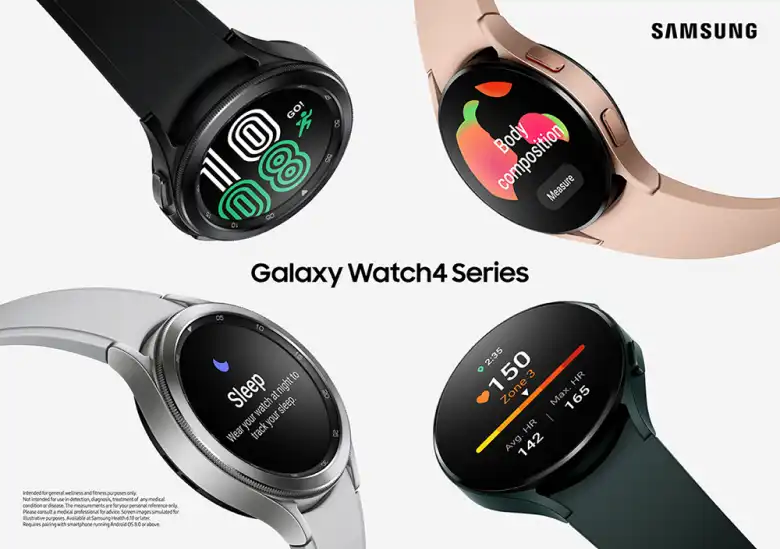
Samsung’s Galaxy Watch series is at the forefront of AI-enabled smartwatches. Featuring an array of sensors and Samsung’s BioActive chip, these wearables use AI algorithms to track ECG, blood pressure, body composition, and sleep metrics with high precision. Integration with Samsung Health and AI-powered insights empowers users to make informed health decisions.
The latest Galaxy Watch Ultra leverages on-device AI inference, using deep learning models for enhanced fall detection, activity recognition, and even stress prediction.
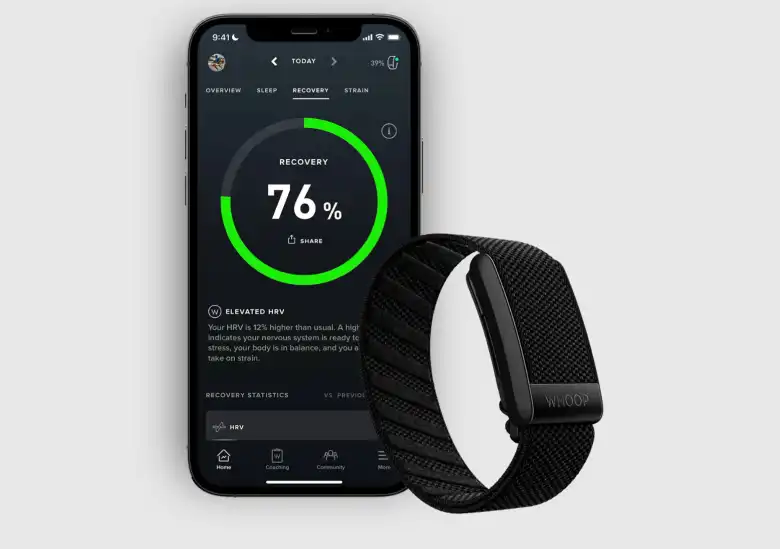
The Whoop Strap 4.0 is a pioneer in AI in fitness wearables. Unlike typical smartwatches, it focuses exclusively on health analytics, using advanced machine learning models to interpret biometrics like heart rate variability (HRV), respiratory rate, sleep patterns, and strain levels. The result? Tailored coaching to improve recovery, performance, and lifestyle.
With features like AI-powered sleep coaching and strain prediction algorithms, Whoop transforms passive data into real-time, actionable health insights.
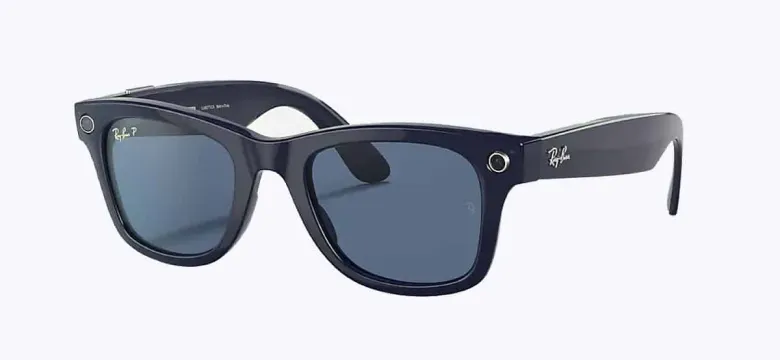
Meta’s Ray-Ban Stories and upcoming smart glasses bring AI to eyewear, combining fashion with functionality. These AI-powered smart glasses include built-in cameras, microphones, and integration with Meta AI and OpenAI’s ChatGPT, enabling live translation, object recognition, and voice-command-based interactions. They turn everyday vision into a tech-powered experience.
By leveraging natural language processing (NLP) and real-time computer vision, these glasses offer smart assistance, be it hands-free content capture, identifying landmarks, or translating speech.
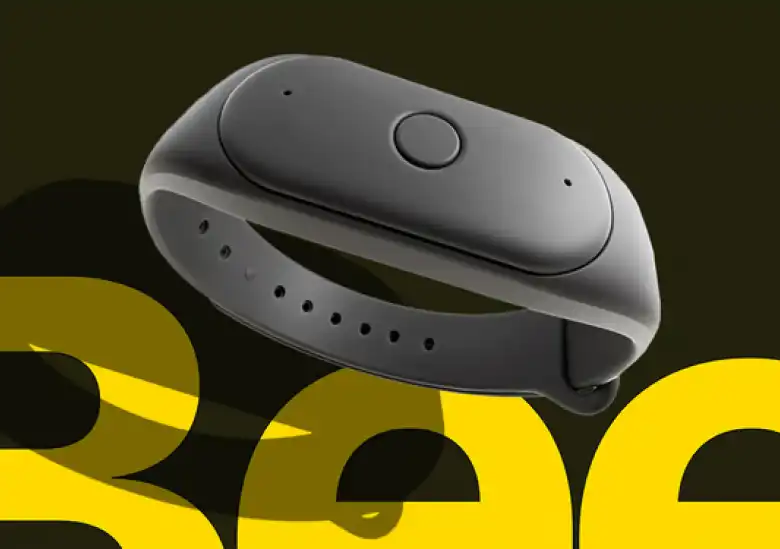
The Pioneer Bracelet by Bee AI is a discreet yet powerful AI-powered wearable that listens, transcribes, and intelligently summarizes conversations. With NLP capabilities and context-aware AI, the bracelet automatically generates personalized to-do lists, action items, and summaries from daily interactions, meetings, or voice notes.
Ideal for productivity-focused professionals, this wearable uses on-device machine learning and secure cloud AI to make everyday conversations more actionable.
How Much Does It Cost to Build an AI Wearable App?:
Building an AI-powered wearable app is about designing intelligent systems that operate in real-time, on compact devices, and offer meaningful insights from biometric or contextual data. Depending on the complexity and AI integration depth, development costs can vary significantly.
| App Type | Estimated Cost | Technical Scope |
|---|---|---|
| Basic Wearable App | $30,000 – $60,000 | Basic tracking, sensor integration (e.g., step count, heart rate), BLE connectivity |
| Mid-Level AI App | $60,000 – $100,000 | Sensor fusion, AI-based recommendations, API integrations (Apple Health, Google Fit), user analytics |
| Advanced AI App | $100,000 – $150,000+ | Real-time AI processing, predictive analytics, NLP, edge AI model deployment, personalized insights |
Developing a high-performing AI wearable application is a multi-layered process involving AI model development, hardware integration, UX optimization, and real-time data handling. Each decision, from deploying on-device AI models to building seamless sensor-to-cloud architecture, directly impacts the overall cost. Below are the major cost drivers that businesses must consider when planning for AI-powered wearable solutions.
- Complexity of Features and AI Algorithms
- Hardware & Sensor Integration
- Cloud vs. On-Device AI
- UI/UX Design for Wearable Screens
- Data Privacy, Compliance & Security
- Testing, Validation & Continuous AI Training
- Third-Party Integrations & API Access
Features That Make AI Wearables Truly Smart
These intelligent systems combine edge computing, NLP, and deep learning models to deliver not just functionality, but foresight.
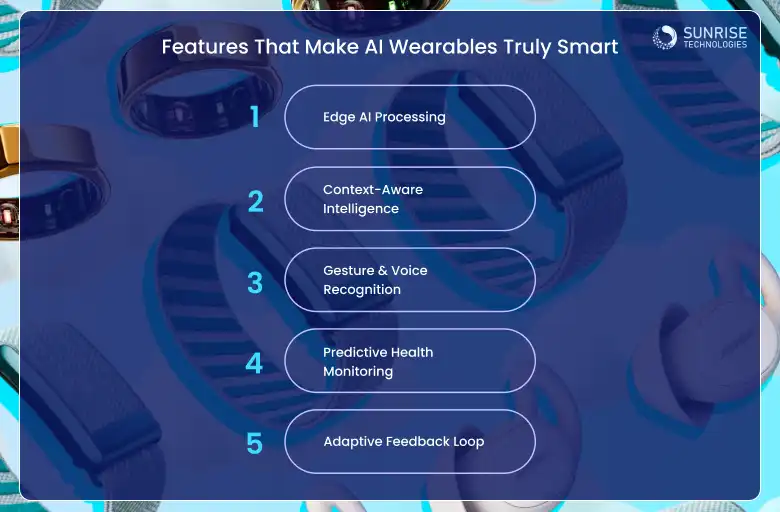
AI models run locally on-device (e.g., Qualcomm Snapdragon, Apple Neural Engine), enabling real-time insights without cloud latency, vital for health-critical or field operations.
Using location tracking + environmental sensors, AI understands if you’re running, driving, or working in hazardous zones, and adapts alerts and interfaces accordingly.
Embedded NLP and computer vision models power intuitive control using hand gestures, eye tracking, or voice, ideal for smart glasses or hands-free operations.
AI models trained on physiological data forecast potential events (like dehydration, stress spikes, or posture issues) using predictive modeling and threshold-based alerting.
With reinforcement learning techniques, wearables evolve with your behavior, improving suggestions, reducing false alerts, and fine-tuning experiences over time.
Your Wearable AI App Development Partner - Sunrise Technologies
At Sunrise Technologies, we specialize in AI-powered wearable app development for startups, offering solutions tailored for industries like healthcare, fitness, and smart wearables. Our team builds custom AI models to handle tasks such as health diagnostics, anomaly detection, and personalized health insights. We also excel in IoT and AI integration, enabling seamless device-to-cloud communication for real-time decision-making.
We prioritize data security by adhering to industry standards like HIPAA and GDPR, while employing robust encryption protocols. Additionally, we focus on creating user-centric, intuitive designs that engage users, ensuring high retention rates and daily interaction. Thinking of developing a smartwatch AI app or an advanced fitness tracker, Sunrise Technologies provides the expertise and innovation needed to bring your wearable AI solutions to life.
Final thoughts:
AI and wearable technology are transforming how we approach health and fitness, providing users with real-time insights, personalized coaching, and advanced monitoring capabilities like heart rate analysis, sleep tracking, and fitness progress reports. These innovations are enabling proactive healthcare management and optimizing wellness through AI-driven alerts and predictive analytics as the market for AI-powered wearables continues to expand in sectors like healthcare, fitness, and sports.
Partnering with a top AI app development company like Sunrise Technologies empowers your brand to leverage cutting-edge solutions, ensuring that your wearable app delivers high-quality performance, security, and scalability, ultimately leading to smarter, healthier living for users worldwide.
Our team is ready to build your vision of the future with more innovative solutions.
AI in smartwatches enhances functionalities such as real-time heart rate monitoring, predictive fitness insights, intelligent notifications, and health anomaly detection, offering a personalized user experience.
Small businesses can harness wearable AI apps to enhance customer engagement, offer personalized fitness or wellness services, monitor employee health in real-time, or even create niche health tech solutions to gain a competitive edge in the digital wellness market.
Wearable technology in healthcare allows for continuous, non-invasive monitoring of patients, real-time alert generation, and chronic disease management, all contributing to proactive patient care.
AI in IoT empowers wearable devices to not just collect data but also analyze it in real time, enabling smarter actions, faster decisions, and more meaningful health or fitness insights.
Yes, AI wearables can analyze patterns in biometric data to predict potential health issues like irregular heart rhythms, sleep disorders, or elevated stress levels—allowing early intervention and better health management.
Sam is a chartered professional engineer with over 15 years of extensive experience in the software technology space. Over the years, Sam has held the position of Chief Technology Consultant for tech companies both in Australia and abroad before establishing his own software consulting firm in Sydney, Australia. In his current role, he manages a large team of developers and engineers across Australia and internationally, dedicated to delivering the best in software technology.


